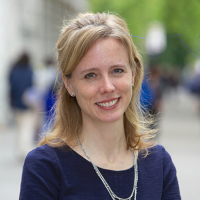The European Research Council has awarded KITAB a five-year, €2 million grant that will enable us to make major progress on our research agenda.
The project is titled ‘Exploring Cultural Memory in the Pre-Modern Islamic World (700–1500): Knowledge, Information Technology, and the Arabic Book’. Our main goal is to identify and explore the workings of cultural memory and how memories were communicated, circulated and exchanged in the period. Our critical intervention is to connect the history of books field to memory studies. We insist that book history is important for understanding how societies could and did remember. And specifically, we interrogate the ways in which texts were used and reused across time and space – for example, when authors copied or paraphrased earlier texts, when they reformulated books into new forms (as with anthologies) or when they reworked narratives to suit present interests.
The project will start in May, with the first year primarily dedicated to work on our corpus of texts, the algorithms we use and general technical infrastructure. In the coming weeks, we will hire a technical lead and a research associate and begin to recruit academics worldwide to help prepare the corpus.
In the second year, three postdocs will begin work, focusing, respectively, on (1) Iraq and the early periods of the textual tradition up through 1500; (2) Egypt, the Mamluk period and engagement with scholarship on Islamic learning and the transmission of knowledge in the period; and (3) the ‘Islamic West’, that is, Islamic Spain and the Maghreb.
I am responsible for the ‘Islamic East’, and Maxim Romanov is responsible for Syria. The Arabian Peninsula features in the project alongside both Syria and Iraq, reflecting its historic importance and its central role in the transmission of traditions early on. We settled on this regional division of roles so as to consider Arabic writings from as many angles as possible.
For each of these regions, we will focus on the following:
-
Authorial practices: the meaning of authorship, the cultural meanings associated with different forms of transmission, and ideas about originality, as well as the broader historical context of the tradition’s explosion, including the impact of the introduction of paper from the third/ninth century onwards.
-
Changing forms of the book: the very idea of the Arabic book as a fixed entity; the ways in which textual fragments in books took on lives of their own within anthologies, encyclopaedias, multitext compilations (majmuʿas), commentaries and abridgements (mukhtasars) and extensions of books; and the generation of new meanings in each unique newly formed book and its text.
-
Narrative adaptations: how frequently copied texts and parts of texts were adapted over time. Our objective is to discern the formation of narratives, often in conflict with one another, out of heterogeneous past material. Changes to narrative are considered in their appropriate historical and sociopolitical contexts to identify interests at work in the development of textual meanings.
We will work both with the OpenITI corpus and with subcorpora curated by members of the research team and featuring metadata-enriched and digitally tagged texts. These subcorpora will include printed books that the team will convert into machine-readable format through an OCR pipeline now under development, and also small numbers of transcriptions from manuscripts. The texts for analysis will include histories but also prosopographies, mirrors for princes, geographies, bellettristic works and religious and legal literature (e.g. Quran commentaries, Hadith collections, legal manuals), as well as works written by Christians in Arabic and in multilingual contexts.
Already, we have hundreds of thousands of files documenting reuse and multiple statistical sets compiled on the basis of these files. And so we hope to be able to include quantitative methods in our work. Of course, our case studies will also involve close reading.
We will prioritise visualising this data so that the team, and also other researchers, can access it. We want users to be able to judge for themselves how closely related particular texts and passages within them are, and to be able to explore textual networks. For example, a user should be able to start with a given text and see which books in the corpus carry textual parallels, where they occur and how extensive the parallels are, and to read, mark up and save in personal accounts aligned passages and notes. A user should also be able to enter KITAB’s application through a word or phrase query and obtain a list of all related passages in which the word occurs, along with their metadata, and then see a representation of these clusters of passages and their relationships to one another.
In the end, all of our work will be freely available. We have chosen to join the ERC’s open data plan, which means that we will post on GitHub and elsewhere our corpus, text reuse data, algorithms and documentation for the project. As a result, scholars working on French, Sanskrit or any other language can ‘reuse’ KITAB’s work for their own projects. It will take some time (please be patient with us), but we hope that this way Middle East history can play a leading role in the general move towards digital methods.
